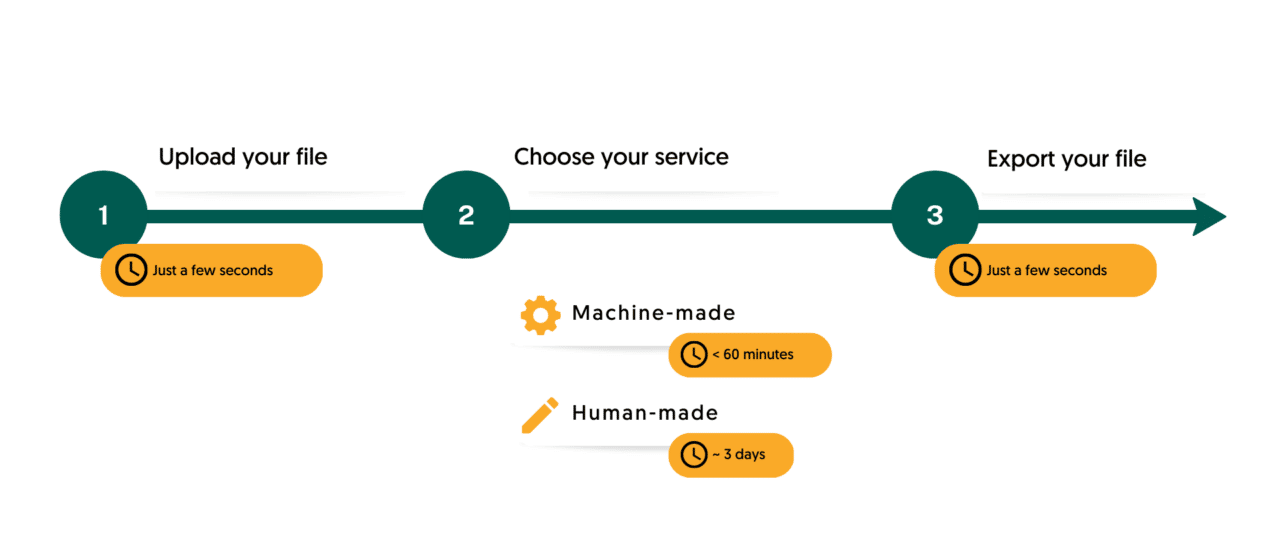Quotations are an invaluable tool for anyone transcribing and analyzing spoken language. Not only do they help capture the essence of a conversation or speech, but they can also be used to add color and context to your transcripts. Whether you’re a journalist, researcher, student, or just someone who wants to record important conversations accurately, learning how to find and use quotations is essential.
In this article, we’ll look at the basics of understanding quotations in transcripts as well as tips on finding them effectively. We’ll also go over ethical considerations and explore tools and techniques for using quotes more efficiently. Finally, we will provide some examples of effective quotation usage along with case studies that demonstrate best practices for quoting accurately in different contexts.
Table of Contents
Understanding Quotations
Quotations are direct or indirect references to someone’s words, thoughts, or opinions. They can be used in a variety of contexts such as writing, speeches, presentations, and transcripts. Quotations are typically noted by quoting marks, and they should accurately reflect the source’s original words and intent.
There are two main types of quotations: direct and indirect. Direct quotations quote directly from the source using their exact words, while indirect quotations allude to the source’s ideas without using their exact words. It is important to differentiate between quotes and paraphrases since one is more accurate than the other when it comes to transcripts and other forms of written communication.
Finding quotations for a transcript is not always an easy task but it can be done with patience and practice. When listening to a recording, look out for key moments or impactful statements that could be worth quoting in your transcript. Mark these down during your transcription process so you can easily identify them later on. It is also important to make sure you are accurately recording these quotes with time stamps so you have an easier time finding them later on when needed.
Finding Quotations
When listening to a recording, try to get into the habit of noting down key moments and impactful statements that could potentially be used in your transcript as quotes. This allows you to easily go back and review the recording later on to identify any quotes worth including.
Making sure you are accurately recording these quotes is also imperative, as this will help you pinpoint them later on when needed. It is best practice to note down time stamps or create labels for each quote so that you can quickly access them if needed for review or further analysis. Additionally, it is important to ensure the accuracy of the transcription by double-checking each quote before using it in your transcript.
This process is significantly faster when using Amberscript: after recording, you only need to upload your file on the platform and you’ll obtain your transcription within minutes. The online tool is easy to use and allows you to edit and customise your file before you export it. Moreover, the tool identifies different speakers and adds timestamps to the transcript for you, optimizing your workflow.
When looking for purposeful quotes, consider what kind of effect they may have on your overall message. Are there any specific phrases or words that carry more weight than others? Consider how certain lines may resonate with the audience or make a lasting impression on readers. A well-crafted quote can make all the difference in how effectively a transcript conveys its intended message, so take care when selecting which ones to include in your document.
Edit your text in minutes, or let our professionals take over. Rush your order and get your file as fast as 24h.
Native speakers and quality checks ensure that you receive 100% accurate transcripts.
Your files are confidentially stored in a secure environment.
Using Quotations Effectively
Once you have identified and transcribed the quotations, the next step is to use them effectively in your transcript. When using quotes, it is important to provide necessary context and attribution for each quote so that readers can understand its significance. This includes noting who said the quote and when it was said, as well as describing any relevant circumstances surrounding it.
Integrating quotations into your writing is also a key factor to consider. Avoid making the transcript sound too choppy or disjointed by placing quotes strategically within your text. Consider how various sentences and phrases might flow together to capture the intended tone or message better. Additionally, make sure that all quotes are accurately quoted from the source material and properly set apart from other text with quotation marks or indentation.
When working with quotations, there are certain ethical considerations to keep in mind. It is important to always verify that any quote used in a transcript is accurate and true to what was originally stated by the speaker. Misquoting someone or taking their words out of context can lead to embarrassing situations or even legal implications, so double-checking every quote before including it in a transcript is essential. Additionally, when quoting conversations between multiple people, try to include any relevant responses in order to maintain an accurate representation of the exchange.
Finally, take advantage of technology tools available for transcribing and quoting accurately and efficiently. For example, Amberscript offers different services based on your needs: whether you choose Machine-made or Human-made transcriptions, you can rest assured that your file will be handled with the utmost care for security and accuracy, to give you the best experience possible.
Best practices for citing and referencing quotations should also be taken into account depending on your use case – this includes guidelines for formatting citations as well as providing proper attribution for quotes used across different media sources (blogs, newspapers, websites, etc.).
Credibility and Ethical Considerations
When working with quotations, there are certain ethical considerations to keep in mind. It is important to always verify that any quote used in a transcript is accurate and true to what was originally stated by the speaker. Misquoting someone or taking their words out of context can lead to embarrassing situations or even legal implications, so double-checking every quote before including it in a transcript is essential. Additionally, when quoting conversations between multiple people, try to include any relevant responses in order to maintain an accurate representation of the exchange.
Furthermore, it is also necessary to provide proper attribution for any quotes used across different media sources (blogs, newspapers, websites, etc.). This means accurately citing the source material along with details such as author name, publication date, and website URL (if applicable). Failure to do so could constitute plagiarism or intellectual property violations if published content is used without permission from the copyright holder.

Tools and Techniques
When transcribing audio recordings, it is important to make sure that all quotes are accurately recorded and properly attributed. Fortunately, there are tools and techniques available that can help streamline the transcription process along with features such as auto-timestamps for recording quotes during playback or text matching tools for pinpointing specific words quickly within large files of recorded audio.
For example, Amberscript is a comprehensive transcription tool that allows users to easily record, store, and manage quotes from audio recordings. It offers a wide range of features such as automatic transcription capabilities which can convert audio into text in real time; advanced search options that can be used to quickly locate specific words or phrases within large files; and powerful editing tools which enable users to seamlessly integrate quotes into transcripts for maximum impact. Additionally, Amberscript also complies with all ethical guidelines related to quoting and citing so users can rest assured that any quote used in their transcript is accurate and properly attributed.
By utilizing effective tools such as Amberscript, you can guarantee that your transcripts remain both credible and ethical. Utilizing these resources correctly will also ensure that all quotes used in your transcript are accurately recorded and properly cited when necessary according to best practices.
Common Challenges and Solutions
Working with audio recordings and transcripts can often be a challenging process. Transcribers are faced with the difficult task of accurately capturing spoken language in written form, which requires careful attention to detail as well as a good understanding of grammar and punctuation rules. Additionally, when dealing with quotes from multiple sources, it is important to ensure that all quotes are properly attributed to their respective sources.
One of the most common challenges associated with transcription is the time-consuming nature of the process.Manually transcribing long or complex recordings can take several hours or even days depending on the length and complexity of the material. Fortunately, tools like Amberscript can help streamline the process thanks to their automatic transcription capabilities and powerful editing features that allow you to integrate quotes into transcripts.
Another challenge is maintaining accuracy when dealing with quotes from multiple sources or long conversations between multiple people. To ensure that all quotes are accurate and properly attributed, double-check each quote before including it in your transcript and make sure to capture any relevant responses in order to maintain an accurate representation of the exchange. Additionally, always cite source material correctly according to best practices for citing quotations and references when necessary.
By utilizing effective tools such as Amberscript along with best practices for quoting accurately and ethically, you can minimize these common challenges associated with transcription and guarantee that your transcript remains credible and ethical.

Get a customized offer
Request a quote for your transcription needs
Examples and Case Studies
In order to illustrate the importance of accurately transcribing quotes and properly attributing them to their respective sources, here are some examples and case studies from real-world scenarios.
- In 2017, a Washington Post investigation uncovered numerous instances in which President Trump had falsely claimed credit for creating jobs or saving existing ones. However, upon closer examination, it was revealed that the quotes attributed to Trump were actually from other sources such as local officials or business executives. This reinforced the need for accurate transcription when dealing with quotes from multiple sources, particularly when it comes to public figures such as elected officials.
- Another example can be found in a 2016 dispute between popular YouTubers PewDiePie and TotalBiscuit regarding certain comments made by TotalBiscuit during an interview. To settle the matter, several independent transcriptionists were commissioned to transcribe the audio recording of the interview in question. After careful review, it was determined that two different transcripts contained subtle discrepancies which could have serious implications if taken out of context. This serves as a reminder of how important it is to make sure all quotes used in transcripts are accurate and true to what was stated by the speaker.
These examples demonstrate why it is essential to take extra precautions when dealing with quotes from multiple sources. By utilizing effective tools such as Amberscript along with best practices for quoting accurately and ethically, you can guarantee that your transcript remains credible and ethical while avoiding any potential legal issues or embarrassing situations caused by misquoting someone or taking their words out of context.
When transcribing audio recordings, it is essential to ensure that all quotes used in the transcript are accurate and properly attributed. Utilizing tools such as Amberscript can help streamline the process while best practices for quoting accurately and ethically will guarantee a credible and ethical transcript. By taking these extra steps when dealing with quotes from multiple sources, you can avoid any potential legal issues or embarrassing situations caused by misquoting someone or taking their words out of context.


